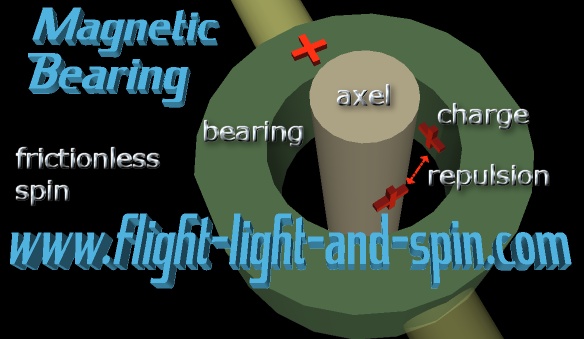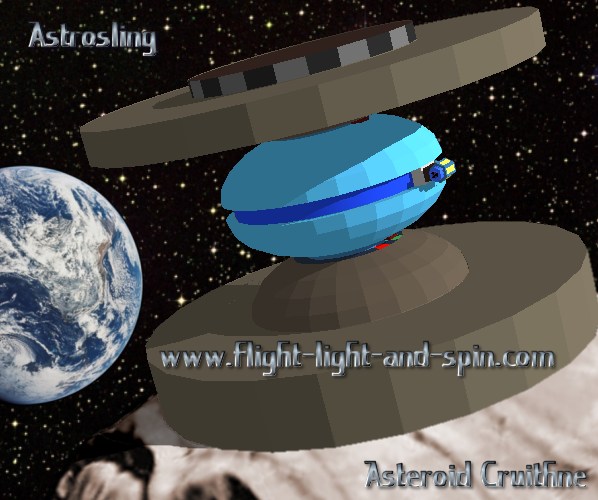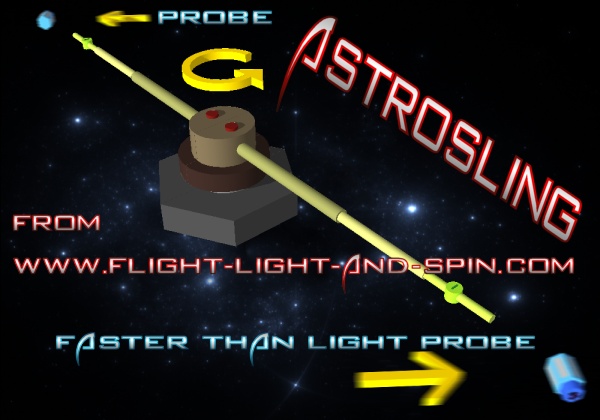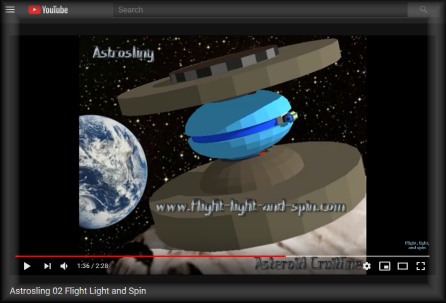 |
The
Astrosling A
satellite with two rotating arms would be attached to a fixed engine.
It would build up momentum by spinning the arms at ever-increasing angular
velocity. It could be fuelled by atomic energy or even ordinary sunlight.
Once enough rotational velocity is acquired, two probes are jettisoned
outwards from each end of the spinning satellite. In this way the fuel
is not carried with the spacecraft. |
||||
Extra
sunlight reflected off many giant mirrors on the earth can boost energy,
and this power will not wane with distance as the rotational velocity
gathers before it launches.
There is no friction on the axle because the central moving part is held in place by identically charged magnets. Thus it cannot overheat. This is the magnetic bearing: .. |
||
 |
||
This
is best type of space-probe because it does not waste fuel by carrying
its own fuel. At an expanded diameter it is more accurate as regards
the destination of the probes because timing the exact release point
of the probes seems the biggest conceptual challenge.
The
mechanism may not necessarily be a classical electromagnetic engine.
A series of timed electric charges with pole-switches on nodes seems
a more intuitive way to use electricity in order to make the rotor spin
fastest. In the next diagram, the green (negative) charge on the rotor
is attracted to the red (positive) nodes to cause rotation. |
||
 |
||
As the rotor passes the oppositely charged node that it is heading towards, that node momentarily goes neutral before going negative and repelling the rotor away as it passes over. As the arms extend, the poles are made to increase power, and the rotation quickens. In this
way any limits caused by electromagnetic engines are negated with
the rate of change in the nodes pre-determined to reach speeds perhaps
reaching quite close to the velocity of light. The non-contact bearings
consisting of magnets, making it a virtually frictionless mechanism
in a near-vacuum. |
||
 |
||
Depending
on the materials used, it may be better to use the shape above to
strengthen the Astrosling. Placing it on an asteroid like Cruithne
will improve stability and Cruithne may even be a source for fuel. Because of the way in which angular momentum accumulates, it could take any amount of time to power-up and reach velocities comparable to the velocity of light. But all that is required is for the probes on the outer edge of the Astrosling to accelerate at just 1G for 1 year in order to reach the velocity of light. It could perhaps even hold a passenger depending on how wide it is. The wider it is, the stronger the materials need to be. Incidentally,
I also postulated the idea of using giant mirrors on the Earth to
fuel spacecraft with the same purpose in mind. They would reflect
sunlight onto a solar-sail or solar panels. Much cheaper than lasers,
I reckon. There is no need for the Mars Rover to suffer from too little
sunlight on its panels. |
||
 |
||



